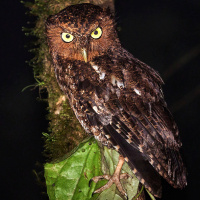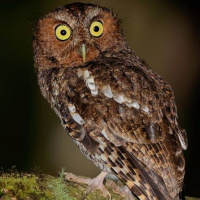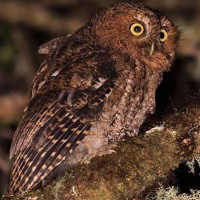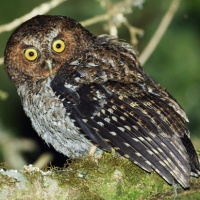Introduction
The Bare-shanked Screech Owl is a small owl with short ear-tufts.
Photo Gallery (4 pictures)
Sound Gallery
Information
Description: The facial disc is cinnamon to tawny-brown with an indistinct dark rim. Eyes are pale yellow. The bill is
greenish-grey or blueish-grey, while the cere is horn.
Upperparts are rich brown to dull rufous, heavily spotted, vermiculated and mottled with black. The hindneck is buffish, and the scapulars have
white outer webs with blackish edges, forming a white band across the shoulder. Flight feathers are barred with cinnamon-buff, and the tail is
barred light and dark.
Underparts are pale brown with a buffish or cinnamon tinge, mixed with white on the chest. The shaft-streaks on the underparts are blackish,
with dusky and rufous horizontal bars or vermiculations. From the lower breast to the belly, there are large squarish white dots at each side
of the central streak on most feathers, giving an 'ocellated' appearance.
Thighs are mostly buff. The lower third of the tarsi and the toes are bare, and pinkish-horn to flesh-coloured. Claws are dark horn with darker
tips.
Size: Length 23-25cm. Wing length 173-190mm. Tail length 88-105mm. Weight 130-190g.
Habits: The Bare-shanked Screech Owl is a nocturnal bird, roosting by day in trees with dense foliage or a thick cover of epiphytes. Hunting is done at dusk and during the night at forest edges and clearings, occasionally in the canopy. This owl shows a tendency to be social, with family-sized groups being found close together, even during the breeding season.
Voice: The main call is a deep whistled woohg-woohg-woohg-woohg, repeated at intervals of several seconds.
Hunting & Food: Feeds mainly on large insects and small rodents. It likely takes other small vertebrates as well. Prey is taken with the talons from the ground or from branches.
Breeding: Nests in natural cavities in trees or in holes made by woodpeckers. Egg-laying occurs from February to May. Fledged young have been observed from May to August.
Habitat: Montane cloud forest from about 900m to 2350m or higher above sea-level. Prefers dense forest and forest edge, but may also be found in thinned woodland.
Distribution: Costa Rica to Northwest Colombia.
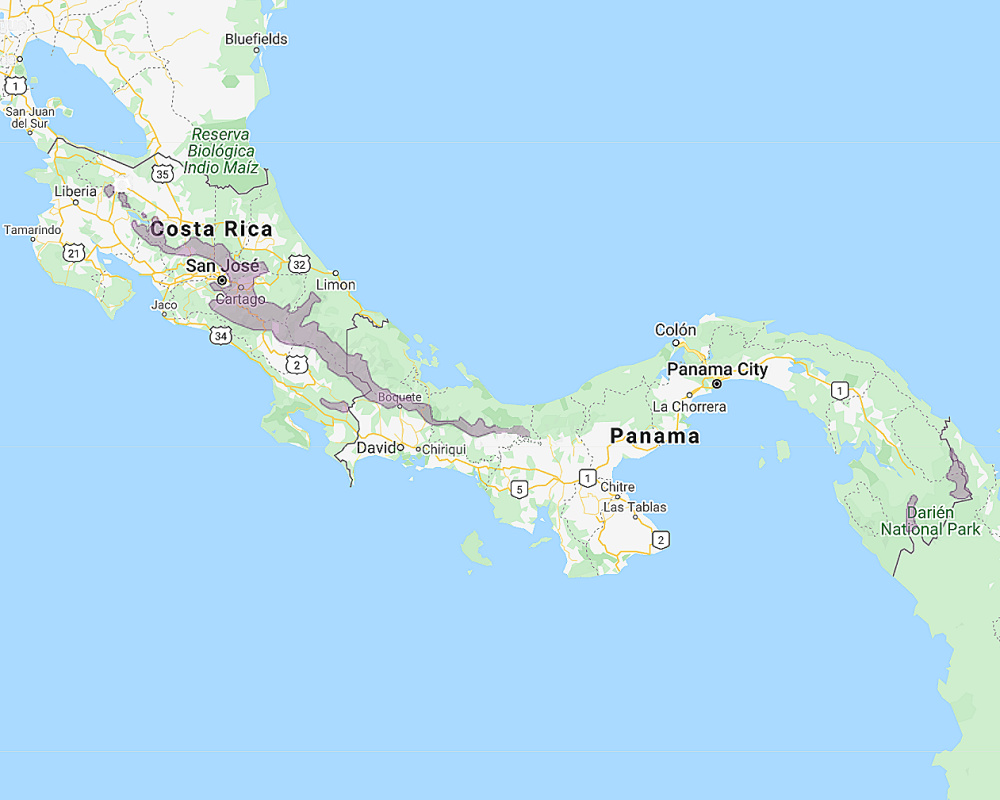
Range of the Bare-shanked Screech Owl Megascops clarkii
Status: Listed as 'Least Concern' by Birdlife International.
Original Description: Kelso, Leon & Kelso, Estelle H. 1935. Biological Leaflet, no. 5.

